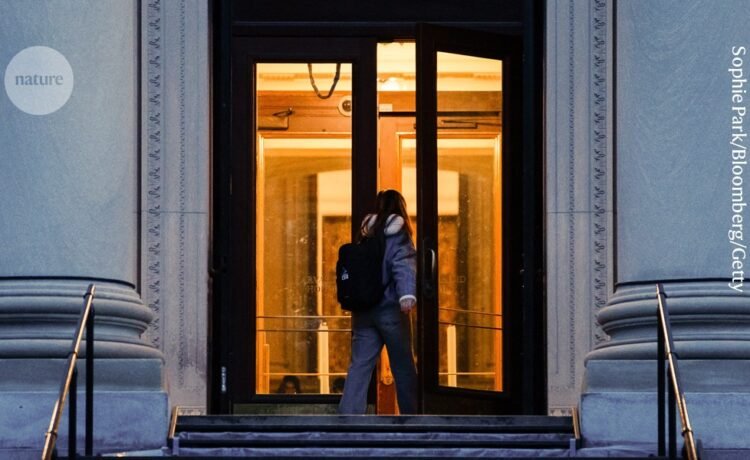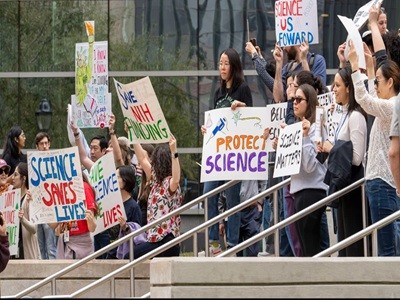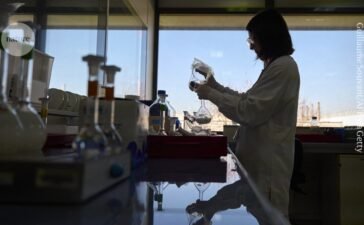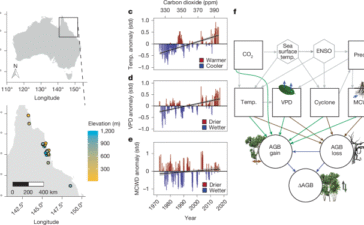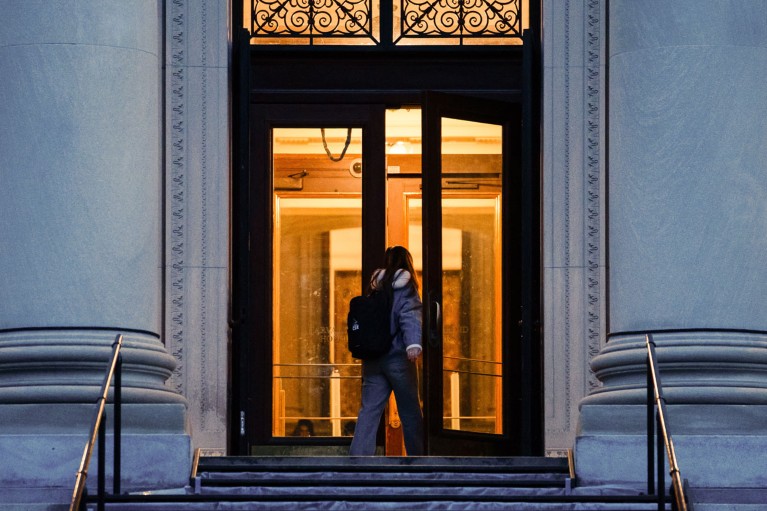
Many academic departments at US universities are planning to cut the size of graduate-student cohorts.Credit: Sophie Park/Bloomberg/Getty
Phoenix-Avery Sarían has been interested in astronomy ever since her mother bought her a telescope as a child. But the fourth-year university student faces a cosmic challenge in reaching the next stage of her academic career: enrolling in a PhD programme.
Preliminary survey data show that dozens of US graduate programmes in astronomy and physics are planning to admit smaller PhD cohorts than usual for the next academic year — or even no graduate students at all. To compensate, Sarían, who is studying astronomy at Ohio State University in Columbus, is applying to more graduate schools than she’d originally planned, perhaps as many as 20.
Sarían is far from alone in her predicament. Across scientific disciplines, US university departments are cutting the numbers of PhD candidates they plan to accept in the current application cycle, for students due to begin in 2026. Some plan to pause admissions altogether. Programmes “in even some of the most elite among elite institutions are taking this step out of an abundance of caution”, says Julie Posselt at the University of Southern California in Los Angeles, who studies higher education. Harvard University in Cambridge, Massachusetts, for instance, is significantly cutting PhD admissions across a swathe of departments ― and cutting admissions in at least one science department by roughly 75%, according to a 20 October story in the student newspaper The Crimson.
These nations are wooing PhD students amid US funding uncertainties
The cutbacks are being driven by several factors, including institutional decisions about which research fields to support. But the reductions are due in large part to the US political environment, researchers say. Since Donald Trump became president in January, his administration has frozen billions of dollars in research funding at targeted institutions, including Brown University in Providence, Rhode Island, and Harvard; although some of this has been reinstated, large deficits and uncertainties remain. The administration has also proposed massive cuts in federal support for research infrastructure. Trump’s administration is now asking all US universities to support its priorities, which include a ban on diversity programmes, in exchange for better access to federal research monies.
Many researchers worry about the long-term effects of throttling the pipeline of trained scientists. “If this keeps up, it would be really devastating for the field, because this is where the next generation of experts comes from,” says Emily Levesque, an astronomer at the University of Washington in Seattle.
Nature asked the US Department of Education for comment, and received an automated reply saying the press office would not respond to queries until after the ongoing US government shutdown ends.
The turmoil continues
Earlier this year, many university departments slashed their incoming PhD classes in a last-minute scramble as the Trump administration began cutting research funds. Now they are trying to work out how many students they can accommodate in an uncertain future.
Few universities have revealed details of their graduate admissions plans for the 2026-2027 academic year. But several grassroots surveys hint that broad cutbacks are in the works across both US institutions and research disciplines.
Levesque and her colleagues surveyed more than 150 US astronomy and physics graduate programmes, and found that at least 33 of the 91 respondents planned to admit fewer or no graduate students for the academic year starting in the second half of 2026.
Meet the early-career scientists planning to leave the United States
Meanwhile, 40 of the 45 biology departments that responded to a separate survey — sent to roughly 80 biology programmes — said that they had already shrunk their anticipated PhD cohorts for the 2026-2027 academic year or planned to do so. Kimberly Cooper, a developmental biologist at the University of California, San Diego, instituted the survey to share information between those responsible for admitting PhD students. “We were having all these conversations about what we do, and making the decisions, all in isolation,” she says. The response was so overwhelming that departmental representatives now meet in a monthly video call to share their experiences.
You Might Also Like
Is academic research becoming too competitive? Nature examines the data
Success rates for Europe’s leading research grants are declining — some to single percentage points — as a surge in...
Aboveground biomass in Australian tropical forests now a net carbon source
Pan, Y. et al. The enduring world forest carbon sink. Nature 631, 563–569 (2024).Article ADS CAS PubMed Google Scholar Cox,...
The world’s first plastics treaty is in crisis: can it be salvaged?
Global consumption of plastics is on the rise, but only a small percentage of plastic waste is recycled. Credit: Justin...
How to pause and restart your science career
Julie Gould 00:01 Hello and welcome to Working Scientist, a Nature Careers podcast. I’m Julie Gould. This is the fifth...





